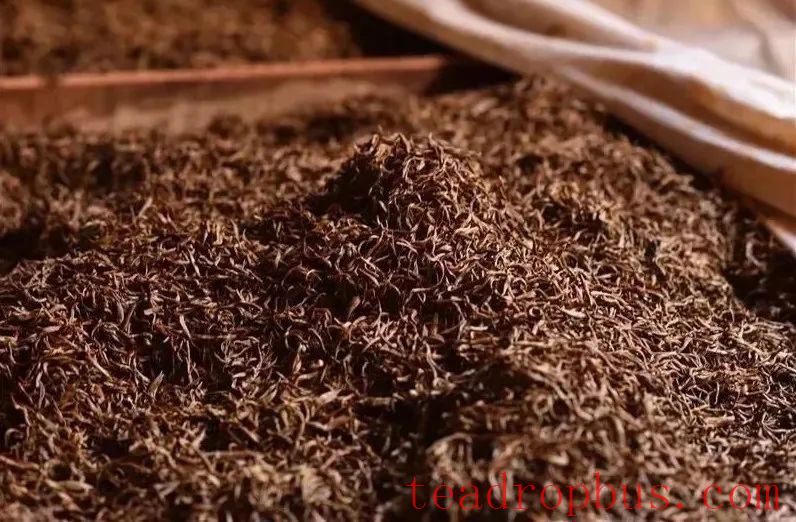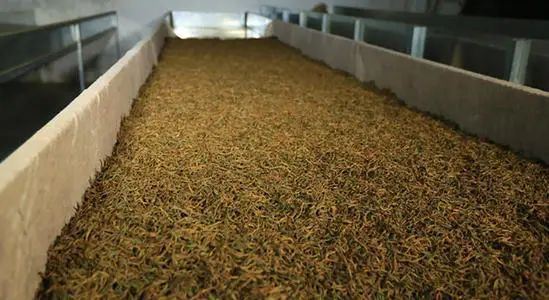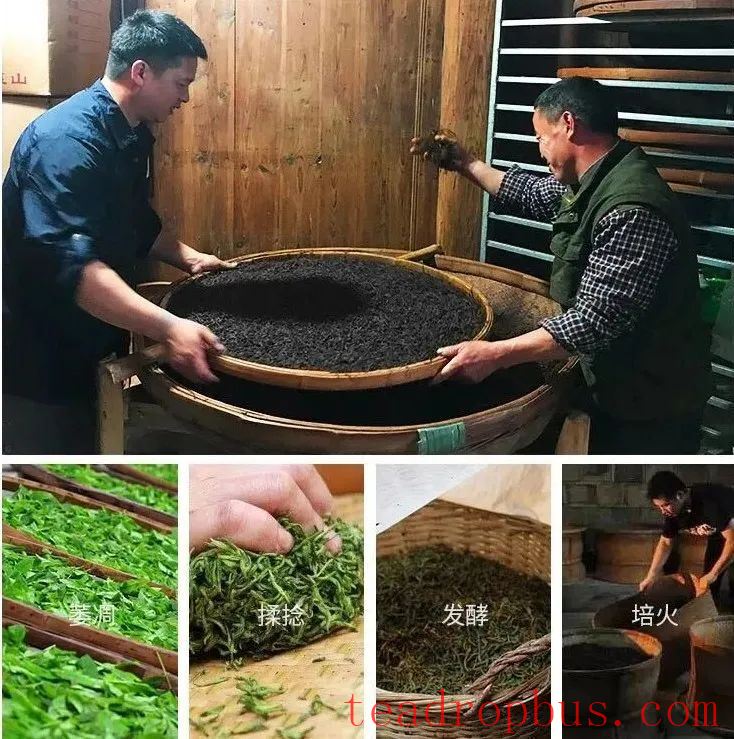For Gongfu Black Tea: the fermentation time is 4 to 6 hours, varying due to factors such as fermentation conditions, degree of rolling, leaf age, and production season.
For broken black Tea: the fermentation time is shorter, typically 30 to 90 minutes.
For Lapsang souchong: with increased room temperature and a damp cloth covering, the fermentation time is around 6 hours.

The duration of fermentation for black tea
The length of fermentation can vary greatly due to factors like fermentation conditions, degree of rolling, leaf age, type of tea, and production season, and should be judged by the extent of fermentation. Typically, black tea fermentation lasts from 4 to 6 hours.
The duration of fermentation is only a reference. Whether fermentation should be terminated depends on the extent of fermentation.
Adequate fermentation is generally characterized by the leaves turning red-yellow, the disappearance of green grassy aroma, and the emergence of floral and fruity aromas.
In large-scale production, the extent of fermentation is assessed through cupping, observing the liquor color, taste, and infused leaf appearance.
Books may specify certain temperatures, humidity levels, and hours, but top tea makers simply say “make tea according to the tea.” The intricacies involved are quite profound!
Additionally, the specific duration of fermentation depends on the age of the leaves, weather conditions, the dryness or wetness of the withering process, and the degree of rolling. Generally, younger leaves, those rolled thoroughly, and those fermenting in higher temperatures will ferment faster and require less time.
Conversely, more time is needed. I've even encountered cases where fermentation took up to 12 hours. During fermentation, it's important that the leaves don't become sour or musty. Tea makers must monitor the progress of fermentation continuously.

The standard for adequate fermentation in black tea
The principle of fermentation control should be “rather light than heavy.” Adequate fermentation is characterized by: the disappearance of the green grassy aroma and the presence of distinct floral and fruity aromas, along with the leaves turning red. The depth of the color can vary slightly with the season and the age of the fresh leaves; spring teas tend to be yellowish-red, while summer teas are reddish-yellow;
young leaves have an evenly red color, while older leaves have a reddish hue with some green.
If fermentation is insufficient, the tea will lack purity in its aroma and have a greenish flavor. The liquor will not be sufficiently red, and the infused leaves will show a bluish-green hue.
If fermentation is excessive, the tea will have a low and dull aroma. The liquor will appear dark and murky, with a bland taste and the infused leaves will be dark and contain many blackened strips. If the aroma has a sour scent, it indicates over-fermentation.

The conditions required for black tea fermentation
The main conditions for fermentation include temperature, relative humidity, ventilation (oxygen supply), thickness of the spread leaves, and duration.
1. Temperature
Based on the optimal activation temperature for polyphenol oxidase, changes in internal components, and quality requirements, the most suitable temperature for the fermentation leaves is 30°C, and the ambient temperature should ideally be 24-25°C. When the temperature is low, measures can be taken to increase the temperature in the fermentation room to achieve the required fermentation temperature.
2. Humidity
This refers both to the moisture content of the fermentation leaves themselves and to the relative humidity of the air. The fermentation room should maintain a high level of humidity, with a relative humidity above 95% being preferable. Sometimes, measures such as misting or sprinkling water are necessary to increase humidity.
3. Ventilation (Oxygen Supply)
Substance oxidation requires the consumption of large amounts of oxygen and also releases carbon dioxide, so the fermentation area must maintain good circulation of fresh air.
4. Thickness of Spread Leaves Affects Ventilation and Leaf Temperature
The typical thickness is 8-12 cm; use a thinner layer for young and smaller-leaved leaves, and a thicker layer for older and larger-leaved leaves; use a thicker layer when the temperature is low, and a thinner layer when the temperature is high. Ensure the leaf layer is uniformly thick and not compressed to maintain good ventilation.
5. The duration of fermentation varies depending on the degree of rolling, leaf age, and fermentation conditions, and typically starts from the beginning of rolling, requiring around 4 hours.